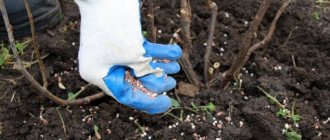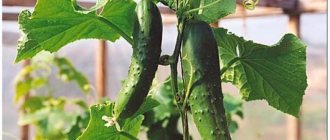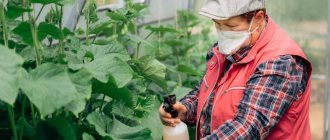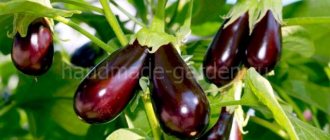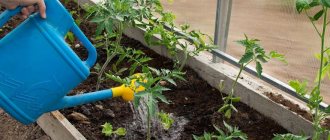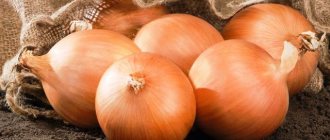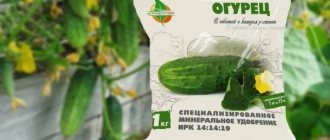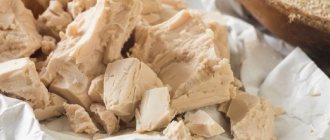Types of fertilizing
Plants can be fed not only at the root. In some cases, foliar feeding is a more effective and faster way to deliver nutrients to plant tissues.
Root
Mineral fertilizers for root feeding can be applied both in liquid and dry form. In the latter case, granular fertilizers are used, from which mineral substances are gradually released and give a prolonged effect. This must be done strictly following the instructions for the drug. This type of fertilizing is used more often by gardeners because it is more convenient.
Foliar
Such feeding cannot replace the main, root feeding. It only complements and also improves its effect if, for some reason, root feeding cannot be applied or it was not enough. The concentration of fertilizers for leaf treatment should be 2 times less than in the main fertilizing.
When to fertilize
After planting cucumber seedlings in open ground or in a greenhouse, you need to provide them with regular and timely feeding. They must be carried out at certain phases of plant development.
First feeding
It is carried out 2 weeks after planting the seedlings in open ground. By this time, the root system of cucumbers has already adapted to the new conditions and will begin to actively grow. Now she needs all macronutrients in equal parts. You can use one of two feeding options.
Ι option. Dilute 20 g of superphosphate, 10 g of urea, 10 g of potassium sulfate in a bucket of water. Here you can add a 0.5 liter jar of mullein infusion. Mix well and feed the plants, using 0.5 liters of solution per bush.
ΙΙ option. 25-30 g of nitroammophoska are dissolved in a bucket of water. You can also add mullein infusion (0.5 l). After thorough mixing, use 0.5 liters of the resulting solution per plant.
2-3 days after fertilizing with mineral fertilizers, you can make a light foliar application of any growth stimulant - Epin, Energen or succinic acid (how to prepare succinic acid for treating plants was discussed above). At the same time, fertilize the soil with an ash solution, using a half-liter jar per bush.
All fertilizing is done on wet soil!
Second feeding
It should be timed to coincide with the beginning of flowering and the appearance of the first ovaries on the lowest tier of the cucumber. Now the plant especially needs potassium-phosphorus fertilizers and microelements such as magnesium and boron for good development of ovaries and fruit filling. Again we choose one of two feeding options.
Ι option. Take 10-15 g of double superphosphate and 10 g of potassium salt per bucket of water.
ΙΙ option. 20 g of potassium monophosphate per 10 liters of water with the addition of 1 liter of herbal infusion.
2-3 days after the main mineral fertilizing, foliar feeding is done with a weak solution of magnesium sulfate. What does weak mean? This does not mean the full dose indicated in the instructions, but half of it. For foliar feeding, you need to add 1 g of boric acid to the same solution.
At the same time (i.e., together with foliar feeding), the ash solution is again watered under the root in the same concentration and dose per plant as during the first feeding.
Third feeding
This is the active fruiting phase. The cucumber now needs a large amount of potassium for normal and abundant fruiting.
Ι option. Potassium sulfate 1 tbsp. l. (30g) and 1 tsp. ammonium nitrate per bucket of water.
ΙΙ option. Potassium monophosphate 30 g per bucket of water.
ΙΙΙ option. We feed with herbal infusion with a small addition of mullein or chicken manure infusion (about 0.5 liters per bucket)
The first option uses nitrogen fertilizer. This is necessary so that the above-ground mass of the plant does not stop growing due to high nutritional costs for fruiting.
Fourth feeding
If necessary, you can carry out a fourth feeding, focusing on the appearance of the plant. When fruiting abundantly, cucumber removes many nutrients from the soil. In August, you can use a herbal infusion mixed with ash. For a bucket of water, 2 liters of herbal infusion and 1 liter of ash infusion. At this time, nitrogen fertilizing is completely excluded.
Succinic acid is used as leaf feeding (the recipe for preparing the dressing is described above). You can add a silent ash solution to the succinic acid (1 glass per bucket).
Common Mistakes
Beginners and professionals alike often make mistakes when caring for cucumbers. Because of this, the greens wither and the harvest turns out to be meager.
The most common mistakes:
- use of ash after liming the soil;
- mixing manure with ash;
- incorrect dosage calculation.
Timely fertilizing, regular watering, the right choice of soil and planting location are guaranteed to allow you to grow a large number of ripe, tasty and juicy cucumbers.
Feeding cucumbers in a greenhouse
There is no particular difference in applying fertilizers in open ground and in a greenhouse. In the same way, they feed at critical phases for the plant - after planting in the greenhouse soil, during flowering and fruiting. The only difference is that in the greenhouse the temperature is higher and therefore all metabolic processes in the plant go faster. If in open ground the fourth fertilizing is not necessary, then in a greenhouse it is necessary - this prolongs the fruiting of the cucumber.
Autumn site preparation
Fertilizer application to cucumber beds can begin in the fall when preparing the soil on the site. You need to add manure or humus in an amount of approximately 10 kg per m2. When preparing the land, organic matter can be replaced with urea, superphosphate, any potash fertilizer, except the one that contains chlorine, or complex fertilizers. They must be taken in the quantity indicated in their instructions for use. Fertilizers must be applied to the dug up soil and mixed well with it. By spring they will dissolve and evenly saturate the soil.
Features of seasonal feeding
The nutritional preferences of cucumbers differ significantly from the needs of other vegetables and root vegetables.
Important: cucumber, unlike tomatoes, is especially sensitive to the presence of organic matter in the soil; the crop grows poorly in poor soils .
Despite the fact that the vegetable produces a voluminous, powerful vegetative mass, it is less demanding of nitrogen nutrition than tomatoes.
Most nitrogen fertilizers are applied at the very beginning of growth. Potassium is a key nutritional element and is added throughout the growing season.
In addition, the crop loves calcium and magnesium ; fertilizing is applied in the same amount as nitrogen fertilizers. In autumn or early spring, during the main filling of the soil for cucumbers, the soil is limed and dolomite flour or ash is added.
Organic matter (rotted manure, compost, bird droppings) is added to the planting holes immediately before planting or sowing. When planting late, green manure, nettles, and weeds are placed in the holes.
Useful tips when feeding
Some useful tips to help you fertilize correctly.
- If the summer is warm, then root feeding will be effective. In the case when the summer is cold, the proportion of leaf treatments is increased, because the root system will not cope with the absorption of nutrients.
- Fertilizers should be applied on damp soil or after heavy rain, so the nutrients will be absorbed faster by the plants.
- Foliar feeding is carried out in the late afternoon. It is not advisable to do this in the morning, because the dew drops have not yet dried on the leaves, which can focus the light and cause the plants to get burned.
- After root fertilizing, 1-2 hours later it is necessary to loosen the soil under the plants.
- The temperature of the solution for watering with fertilizers under the roots should be at least 23-25°C. Cold liquid fertilizing is as harmful as watering with cold water. The root system receives severe stress, and root rot may develop.
- It is necessary to carry out treatment on the leaves so that the liquid from the sprayer falls not only on the upper part of the leaf plate, but also, without fail, on the lower ones. This is where the stomata are located, which draw food into the internal tissues of the plant.
Signs of excess or lack of elements on cucumbers
Fertilizers must be applied in a strictly defined dose, without exceeding it. Overfeeding plants is much worse than underfeeding. By appearance, you can determine an excess or lack of nutrients.
Nitrogen
Overabundance . The leaves become dark green and take on an irregular shape, and the stems become excessively thick and powerful.
Flaw . The stems become thinner, the leaves become lighter in color and become smaller. The tips of the fruits become pointed, but at the base, on the contrary, they thicken.
Potassium
Overabundance . Mosaic spots on the leaves, a yellow border along the edge of the leaf, internodes lengthen.
Flaw . Excessive growth of green mass, especially at the top. Old leaves turn yellow and curl.
Phosphorus
Overabundance . The plant begins to age quickly, which is reflected in the yellowing of the entire plant and the subsequent falling of leaves.
Flaw . The edges of the leaves curl upward, and the veins appear purple. The upper leaves become smaller, and the stems grow very slowly.
Lack of minerals and what it can lead to
Cucumbers have an extremely short growing season; mineral, organic and complex fertilizers are used to prolong it. The plant signals the lack of a specific element in different ways, for example:
- Pale leaves. If the leaves of cucumbers fade at the very beginning of summer, it means they lack nitrogen. The new leaves become smaller, and the set fruits have a shortened, barrel-shaped shape. A lack of nitrogen will lead to the complete death of the plant, and the amount of harvested crop will be reduced several times. It is important to feed plants using the foliar or root method.
- Yellowing of the leaf while the veins remain green. Cucumbers lack iron. The disease is called chlorosis. Lack of iron leads to the gradual death of the plant; it first stops blooming and bearing fruit, and then dries out. Iron chelate helps to cope with the problem.
- Purple spots on leaves. The leaves turning a lilac hue is one of the signs of phosphorus deficiency. Cucumber culture needs ammophos, superphosphate or wood ash. Fertilize by foliar method.
- Crooked fruits. If crooked fruits begin to appear, it means that the cucumbers have drawn all the potassium from the soil and are now in dire need of it. Cucumbers become pear-shaped, tapering to a minimum size at the stalk itself so that a rather large tail is obtained. Such a cucumber usually also turns yellow, finally losing its presentation. A solution of potassium sulfate or wood ash helps to correct the situation.
Fruits and green parts of plants lose their attractive appearance due to pests and diseases, due to the sun or rain. Before applying additional fertilizer, it is necessary to study the situation, inspect the bushes, and perhaps first try to spray the leaves with solutions against aphids and other pests that are almost invisible to the eye.



